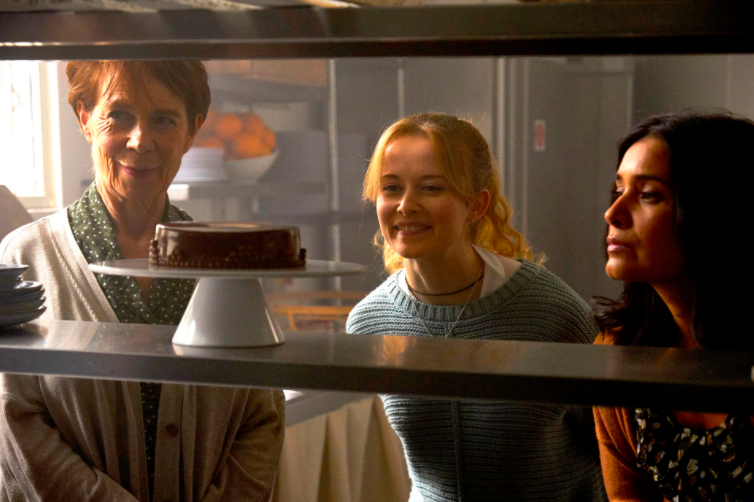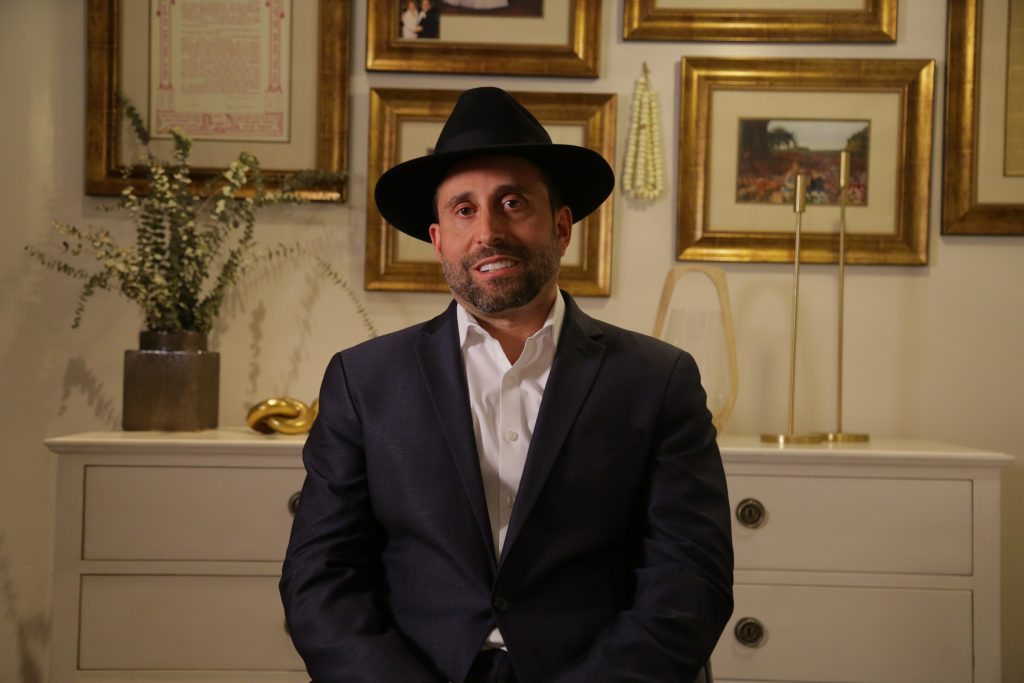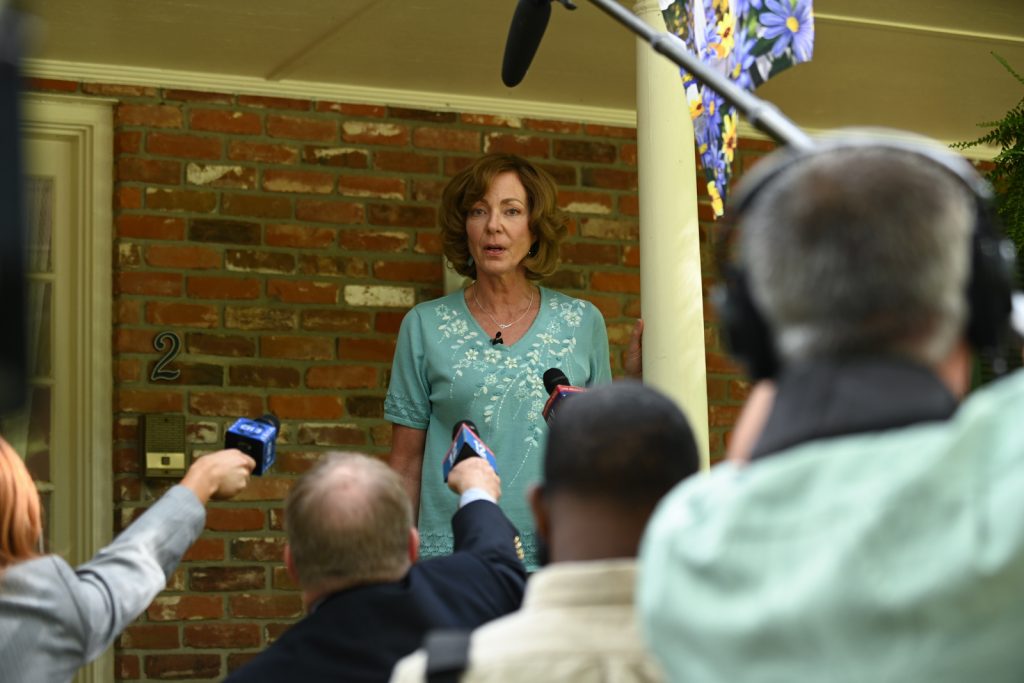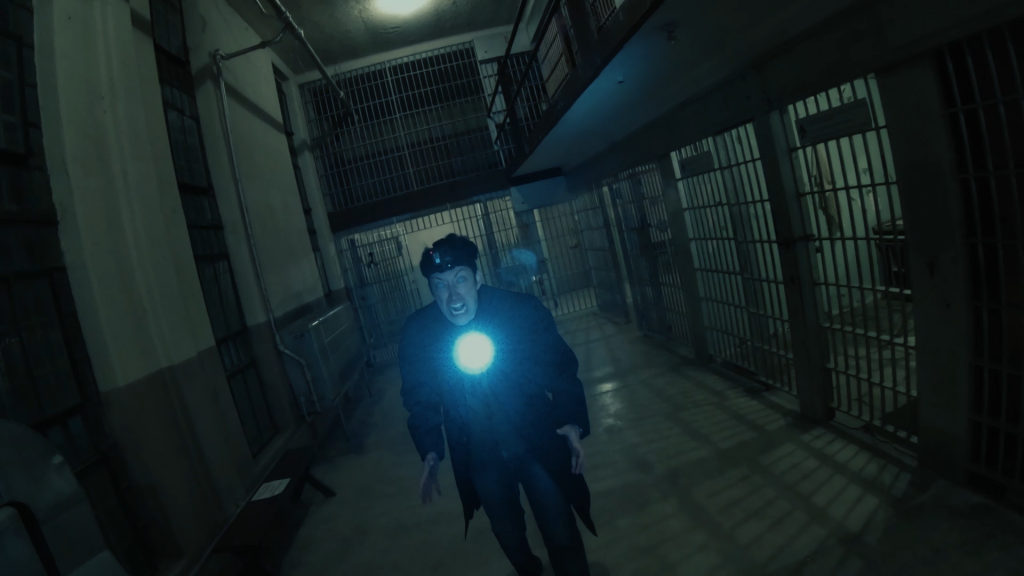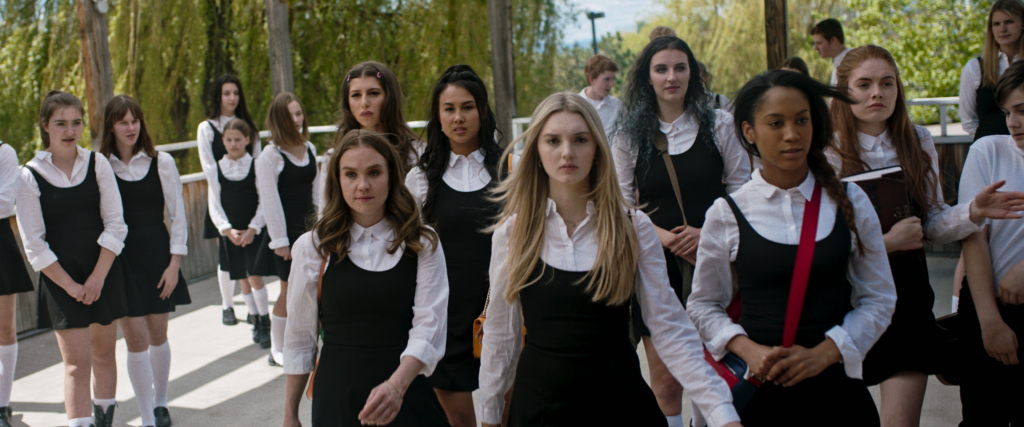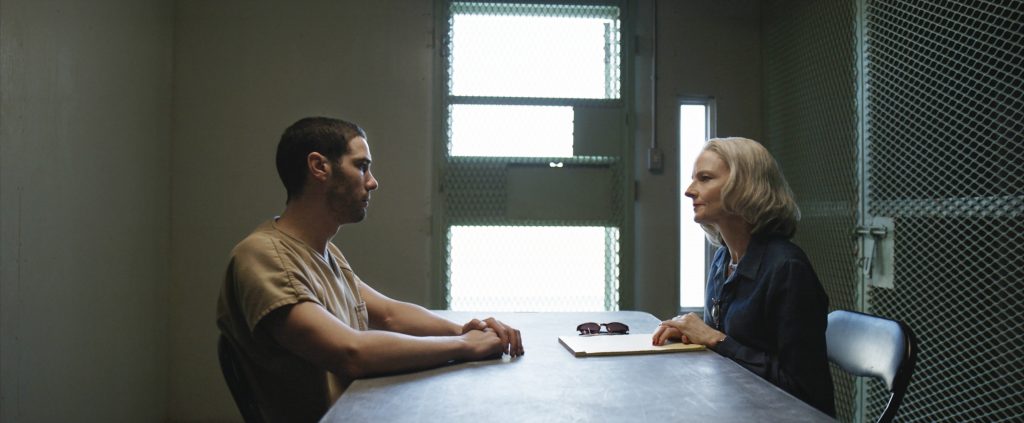February 24, 2021
by Carla Hay
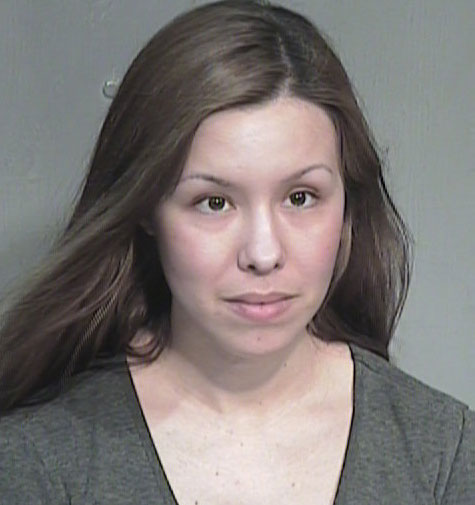
“If I Can’t Have You: The Jodi Arias Story”
Directed by Christopher Holt
Culture Representation: The documentary “If I Can’t Have You: The Jodi Arias Story” features a group of white people and some Latino people discussing the case of Jodi Arias, the California woman who was convicted of the 2008 murder of her ex-boyfriend Travis Alexander in Arizona.
Culture Clash: Some people interviewed in the documentary say that justice was served with the murder conviction, while others say that the conviction was unfair because they believe Arias’ claims that she acted in self-defense.
Culture Audience: “If I Can’t Have You: The Jodi Arias Story” will appeal primarily to people who are interested in notorious true crime cases.

The Jodi Arias case has gotten so much publicity that most people who followed the story already know what the outcome was. On June 4, 2008, she killed her ex-boyfriend Travis Alexander by stabbing him 27 times and shooting him at his home in Mesa, Arizona. Arias claimed it was self-defense, but she was convicted of first-degree murder in 2013. In 2015, she was sentenced to life in prison without parole. The documentary “If I Can’t Have You: The Jodi Arias Story” (directed by Christopher Holt) doesn’t reveal anything new, but it does a very good job of presenting both sides of this tragic story.
The documentary includes interviews with some of Alexander’s friends and members of law enforcement who wholeheartedly believe that Arias is guilty. Representing the other side in the documentary are members of Arias’ defense team and an unidentified female relative, who wholeheartedly believe that Arias is not guilty because they think that Arias acted in self-defense. The documentary seems mostly objective in trying to present a balanced view of both sides.
The people interviewed in the documentary are:
- Christopher Black, who knew Arias in high school
- Rachel Blaney, a police detective in California’s Siskiyou County Sheriff’s Office who interviewed Arias and investigated the case
- Jeff Jensen, a Church of Jesus Christ of Latter-day Saints elder who knew Alexander and Arias
- Maria De La Rosa, a defense mitigation specialist who is on Arias’ side
- Professor Robert Geffner, a psychologist for the defense
- Tom Fichera, Arias’ former boss at Ventana Inn & Spa in Big Sur, California
- Chris Hughes and Sky Hughes, a former husband and wife who were friends of Alexander
- Juan Martinez, the former Maricopa County, Arizona prosecutor who was the lead attorney in the state’s case against Arias.
- Taylor Searle, one of Alexander’s friends
- Richard Van Galder Jr., a homicide sergeant in Arizona’s Mesa Police Department
- Jennifer Willmott, who is Arias’ defense attorney
- An unidentified female relative of Arias who wanted to remain anonymous
The movie includes excerpts from Arias’ diaries that are read by an actress in voiceovers. There are also re-enactments for some of the scenes that involve Arias driving from California to Arizona on the day that she committed the crime, as well as re-enactments of Arias and Alexander’s relationship in happier times. These re-enactments are a little tacky. The voiceover readings would have been sufficient.
A diary excerpt that’s read in the beginning and end of the documentary is: “Five things I’m grateful for: (1) babies; (2) pizza; (3) the shape of my body; (4) my hair; (5) Travis Alexander.” Considering what Arias is convicted of doing to Alexander, these words are haunting.
The movie goes pretty deep into the background and psychology of Arias. Viewers can make up their own minds if she’s an evil sociopath or a victim of a long history of abusive relationships. One thing is clear: She and Alexander had a relationship that was doomed to fail because of her obsessiveness and his unwillingness to give her the commitment that she wanted.
Born in Salinas, California, on July 9, 1980, Arias is the daughter of William “Bill” Angelo Arias (a former restaurateur) and Sandy Arias. Jodi has an older half-sister, two younger brothers and a younger sister. According to the documentary, her life was relatively stable until the family moved in 1995 to the smaller city of Yreka, California, so that Sandy could be closer to her relatives and because Bill was having some health problems.
In Yreka, Jodi was a misfit who was often bullied by other kids in high school, according to her former classmate Black. He describes Yreka High School as a “diverse” school when it came to race, but most of the students knew each other for years, so Jodi’s status as a newcomer automatically made her an outsider. Excerpts from her diaries reveal that she became addicted to smoking marijuana during her unhappy years in Yreka. She also had a troubled relationship with her parents, especially with her father. (Her family supported her before, during and after the trial.)
While she was in high school, Jodi began dating a man named Bobby Juarez, who was a few years older than Jodi. Juarez lived in a trailer and is described in the documentary as a strange recluse and very domineering. Jodi eventually dropped out of high school and worked as a waitress to support herself and Juarez, who was chronically unemployed. They broke up because he reportedly cheated on her often.
Jodi then moved to Big Sur, California, and got a fresh start working in hospitality at the Ventana Inn & Spa. Her former boss Fichera remembers her as a pleasant and down-to-earth employee. She was also romantically involved with a co-worker named Darryl Brewer, a much-older man who was a divorced dad. According to Fichera, that relationship didn’t last because Jodi wanted to get married and start a family with Brewer, but he did not.
Her next serious romance was with Alexander, who was born in Riverside, California, on July 28, 1977. He was a rising star as a salesperson/motivational speaker for Pre-Paid Legal Services (PPL). Jodi met Alexander in September 2006, at a PPL convention in Las Vegas. In November 2006, Jodi converted to the Church of Jesus Christ of Latter-day Saints, also known as the Mormon religion, which was Alexander’s religion. Jodi and Alexander officially began dating in February 2007, but their relationship was tumultuous with multiple breakups and reunions.
Because she lived in Palm Desert, California, and he lived in Mesa, Arizona, for most of their relationship, they would often meet and stay at the home of Chris and Sky Hughes, who lived somewhere in the middle, in Murrieta, California. In 2007, Jodi moved to Mesa to be with Alexander, but that arrangement didn’t last. Alexander’s friends warned Alexander that Jodi wasn’t good for him, but he couldn’t make a complete break from her.
Chris and Sky Hughes, who were married during the time they knew Alexander, say that they saw signs early on that Jodi was too possessive in her relationship with Alexander. Sky says that she often caught Jodi spying on Alexander. Jodi would do things such as snoop in his phone without permission or eavesdrop on his conversations.
The documentary doesn’t go too much into Alexander’s background, except to reiterate what has already been reported. His friends describe him as a fun-loving, outgoing guy who was very flirtatious with women. The documentary doesn’t mention how he and his seven siblings were raised by his paternal grandparents, starting when he was 11, because his parents (who are now deceased) had drug problems.
As has been reported elsewhere, Alexander had two sides to him: He presented himself as a strict Mormon to some people and claimed that he was saving his virginity until he got married. But the reality was his other side: He definitely like to party, and he wasn’t a virgin.
He and Jodi took sexually explicit photos of each other. These photos surfaced after his death, and she detailed their sexual relationship in her diaries. Ultimately, Jodi and Alexander were incompatible because he was interested in dating other women, and she wanted a monogamous commitment from him that would lead to marriage.
Even though Alexander told people in 2008 that his on-again/off-again relationship with Jodi was over, and he was dating someone else, he was still secretly seeing Jodi on the side for sex. By all accounts, she thought that she still had a chance to get back into a serious relationship with him, but he saw things differently. Prosecutors say that the motives for the murder were jealousy and revenge.
On the day that Jodi killed Alexander in his home, they had sex. She took explicit nude photos of herself and Alexander. And she took photos of him during and after the murder. She left the camera in the washing machine, thinking that water would destroy the photo evidence. But through computer forensics, investigators were able to recover the damning photos from the memory card.
Even though Jodi’s supporters vigorously defend her, they can’t erase the fact that she lost credibility when she changed her story more than once. First, she denied having anything to do with the crime. Then, when the photo evidence was found, she claimed that she and Alexander were victims of a home invasion by unknown intruders. And then, her last excuse (which was used in the trial) was that she killed Alexander out of self-defense because he was allegedly abusive to her.
Jodi’s arrest, interrogations by police and highlights from the trial are all covered in the documentary. Police detective Blaney remembers that Jodi came across as emotionally aloof when Blaney interrogated Jodi before the arrest: “It was hard to find Jodi’s soft spot.” The documentary does not portray Alexander as saintly, since it mentions evidence brought up in the trial that he sent derogatory messages to Jodi when they were having problems in their relationship.
Jodi’s supporters in the documentary try to victim-blame Alexander, by saying that any mean-spirited text and email messages that he sent to Jodi somehow constitute enough reason for her to kill him in-self-defense. Defense psychologist Geffner says that Alexander was “leading a double life” and that “there was emotional and verbal abuse during the entire relationship” between Jodi and Alexander. Defense attorney Willmott comments that there was “formidable power and jealousy and cruelty from Travis.” De La Rosa goes as far to say that Jodi didn’t get a fair trial because of sexism and misogyny toward Jodi. Because Jodi was sexually active, “that made people hate her,” says De La Rosa.
What these defenders didn’t mention but the documentary does bring up is that Jodi admitted in her court testimony that there was no proof that Alexander physically abused her. The defense’s legal representatives also sidestep the issue of why Jodi changed her story so many times and tried to cover up the fact that she killed Alexander. And the defense psychologist doesn’t state that the excessive number of stab wounds and choosing an additional way to kill by shooting the victim are indications of overkill rage that go beyond self-defense.
In the documentary, Alexander’s friend Searle becomes so overcome with emotion that at a certain point in the interview, he couldn’t speak. He comments on this tragic murder: “There’s nothing in the world that can make sense of what happened.” Chris Hughes and Sky Hughes, who wrote a 2015 tribute book about Alexander called “Our Friend Travis: The Travis Alexander Story,” also express sadness over the tragedy of his death. However, police interview footage shows that shortly after Alexander was found brutally murdered, Chris and Sky were oddly laughing and grinning in the interview room when they said that Jodi probably committed the murder.
The documentary mentions that former prosecutor Martinez, who was fired and disbarred in 2020, has had his reputation ruined because he was accused of sexually harassing several women in situations unrelated to the Jodi Arias case. He was also accused of having a consensual but unethical sexual relationship with a female blogger who covered the Jodi Arias case, and leaking information about the case to the blogger.
Martinez believes that his tainted legacy won’t change the facts and the outcome of the Jodi Arias trial. He says he got “no joy” in his victory in the Jodi Arias case. “I see myself as a conduit of the truth,” Martinez adds. Jodi’s attorney Willmott says that she is hoping that Jodi will get a new trial. But that is extremely unlikely, considering that Jodi’s own testimony at the trial had a lot to do with her conviction and why she was sentenced to life without parole.
Discovery+ premiered “If I Can’t Have You: The Jodi Arias Story” on February 12, 2021.



